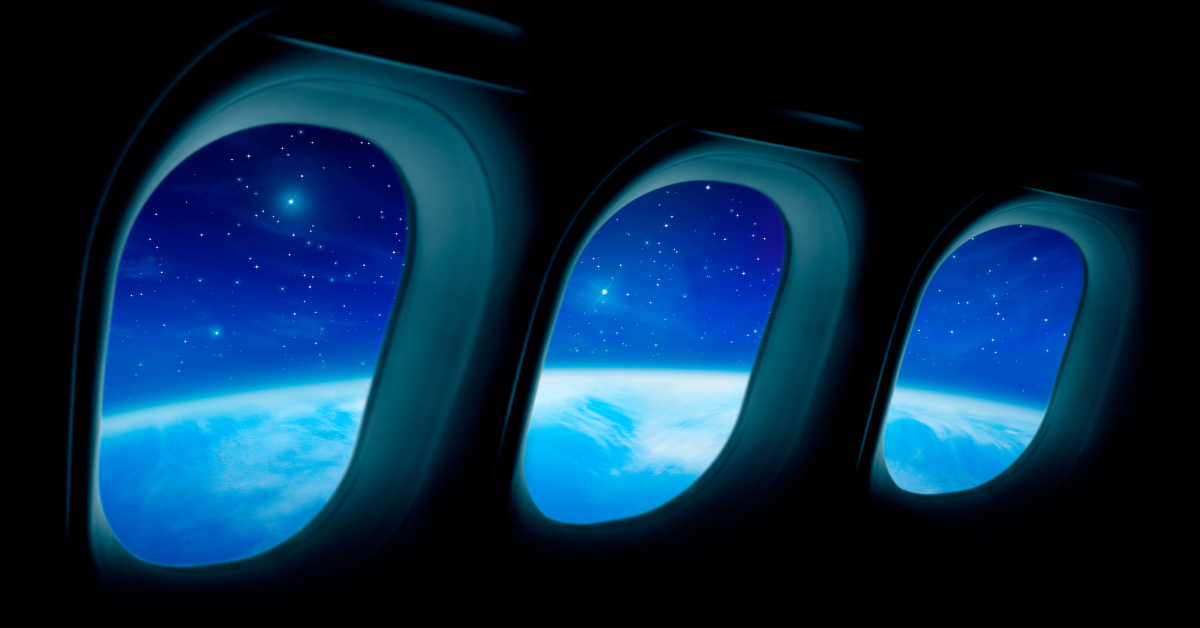We have seen some remarkable advances in space transportation in recent days and months. But space flight risks the destruction of both terrestrial and celestial environments, through extension into the cosmos of economic systems that have contributed to inequality and climate catastrophe on Earth. These risk justify very careful consideration, because the stakes couldn’t be higher.
Reference
Ross, M., Mills, M., & Toohey, D. (2010). Potential climate impact of black carbon emitted by rockets. Geophysical Research Letters, 37(24), 1–6.
Transcript
Did you see the SpaceX Starship launch last week? The most powerful rocket ever built was launched from Elon Musk’s Starbase in Southern Texas. This launch was remarkable for at least two reasons. Firstly, Starship became the largest and most powerful vehicle ever to fly – this enormous rocket stand 122m tall. Secondly, the mission aimed to break new ground for spaceflight because SpaceX planned to return Starship’s huge first-stage booster to the Starbase, catching it with the ‘chopstick’ arms of the launch tower.
Given the fact that this was a test flight and that any number of things could have gone wrong, the mission was a spectacular success. Watching the video of the launch and return online is scarcely believable.
The aim of Starship is to take increasing payload mass to orbit and beyond on a wider range of space missions. The aim of reusable rocket boosters is to lower launch costs and increase launch frequency, possibly to a near future of daily departures.
Starship is the latest project in SpaceX’s reusable launch system which will commercialise space and ultimately, according to Musk, allow humans to colonise Mars supposedly within his lifetime. Space travel and tourism form a central part of plans to commercialise space. Musk’s Starbase in Southern Texas may become the first of many space ports much the same as international airports that we know today. This vision raises important questions about space tourism and sustainability.
****
Space tourism dates to 2001. On the 30th April 2001, US millionaire Dennis Tito arrived at the International Space Station via the Russian space programme, becoming the world’s first space tourist. Tito paid $US 20 million for his trip to the space station.
In the 20 years since Tito’s holiday in space, only a handful of other – uber wealthy – tourists have followed in his footsteps. But during this time three companies – SpaceX, Blue Origin and Virgin Galactic – were studiously advancing their own similar but distinct ambitions for the sale of tourist experiences that are – literally – “out of this world”. Musk, Branson and Bezos have become known as the space billionaires by virtue of the private space programmes.
The tourism space race really came to public attention in mid-2021. In that year on 11th July, billionaire Richard Branson blasted off into suborbital space to experience four minutes of weightlessness before returning to Earth a few minutes later. A few days later on 20th July Amazon founder Jeff Bezos launched his own private rocket and spent 11 minutes in suborbital space.
Timing is everything. Enormous marketing opportunities to commercialise space are at stake, not to mention enormous egos. As New Zealand columnist Joe Bennett wrote: “How can one not suspect that here we have a brace of cocky schoolboys seeing who can pee highest?” What are we to make of the ambitions of the space billionaires – Elon Musk, Jeff Bezos and Richard Branson? And what are the implications for those of us whose feet remain firmly on the stricken Earth?
Space flight throws up competing dialogues between advocates of space exploration and commercialisation, and those who see expansion into space being at odds with issues of critical importance on Earth, such as fighting poverty, ecosystem collapse, biodiversity loss and climate change.
As currently the only viable habitat for the human species and the only known bastion of life in the Universe, Earth is imperative for the near-future survival of all humans and Earth’s spectacular but rapidly declining biodiversity. Will the billionaire space race distract our focus, and undermine our efforts to inhabit a liveable planet Earth over the critical 10-15 years ahead?
****
International organisations such as the UN and OECD typically use the years through to 2030 or 2050 as the critical timeframe for humanity to avert catastrophic global climate change and ecosystem collapse. Space flight renders these spatial and temporal parameters of sustainability obsolete. In a spatial sense, space flight requires us to consider the celestial impacts of human activities, such as space junk and pollution of the night sky.
And in a temporal sense space flights consume non-renewable resources that required millions of years to form, producing materials and pollutants that will outlive us by tens of thousands of years, not to mention the carbon compounds associated with global warming, 25 percent of which will still be in the atmosphere 30,000 years from now.
Guzzling Earth’s resources and destroying Earth’s biosphere for the sake of four minutes of weightlessness is perhaps the height of destructive consumerism. Even if one accepts the imperative to decouple human life from Earth as a safeguard against future meteor strikes (or climate catastrophe), responsibility for any such initiative should not lie in the hands of private entrepreneurs driven by grand personal ambitions, and operating in a regulatory vacuum. Currently billionaire egotism and rampant consumerism in space seem to be exempt from concerns for the sustainability for all living entities on Earth.
****
So how do we react to these private space programmes in relation to questions of sustainability on Earth? Scientists inform us we must make rapid and unprecedented changes to our lifestyles to avoid climate catastrophe. They pinpoint flying as the most destructive form of travel, and the failure over recent decades to allocate and account for international aviation emissions continues in 2024.
On a per capita basis, few other human activities contribute such substantial amounts of greenhouse gas emissions in a comparably short period of time as air travel. Given that we have failed to account for the emission of international tourist air travel, where do we begin with regulating the emissions associated with discretionary tourist space flights?
Space flights emit ‘black carbon’ at very high altitudes where radiative forcing multiplies the climate impacts of emissions. It was pleasing to see the impacts of space flights on Earth’s climate being mentioned in New Zealand’s reporting of the Starship launch last week – these are really important questions we can not afford to ignore.
A paper published in Geophysical Research Letters in 2010 reported that 1000 spaceflight launches per year would constitute a contribution to climate change equivalent to the annual emissions of the entire global aviation industry.
This is contradicted by Branson’s claim that his space flights have a carbon footprint per passenger comparable with a trans-Atlantic business class seat.
Branson claims travelling to the edge of space and looking down on Earth draws attention to the fragility of our planet, transforming paying tourists into environmental stewards. The same argument was made for increasing tourist visits to Antarctica in the 1980s, but there is no evidence to support this claim. Perhaps wealthy tourists could find equal inspiration to become environmental steward by watching a David Attenborough wildlife documentary on television which produces zero emissions.
Despite Branson’s stewardship claims, space flights are a new form of consumer capitalism that raise the sustainability and climate stakes at a critical moment for Earth’s life support system.
****
It is now accepted that we have entered a new, human-induced geological age. The Anthropocene is characterised by environmental degradation on an unprecedented scale caused by humanity; mass extinctions, elevated levels of climate-warming carbon dioxide in the atmosphere, ubiquitous microplastics, nitrogen and phosphorus overload and airborne particulates in sediment and glacial ice from fossil fuel burning.
Fundamentally, space flight actually draws the concept of the Anthropocene into question. The billionaire space race is motivated by a tiny cadre of unimaginably rich individuals and a select number of extremely wealthy tourists, generating enormous negative impacts that extend throughout societies, across the planet, and into the cosmos.
The Anthropocene is problematic because it treats humankind as a unitary and undifferentiated force of unprecedented environmental destruction. The reality is that environmental degradation is now a sociogenic issue caused, more precisely, by unrestrained and unequal capitalist production and consumption. Unregulated capitalism is now motivating a tiny fraction of humanity to extend the process of capital accumulation beyond Earth.
By failing to critically consider the implications of space flight, we ignore ever greater scope for inequality and injustice through the extension of capitalism into the cosmos, access to space resources, and the build-up of debris in Earth’s orbit. Wherever we stand on these issues, we should not let the motivations of space billionaires go unquestioned, nor should their actions and interests escape critique, when the stakes for humanity are so high.








